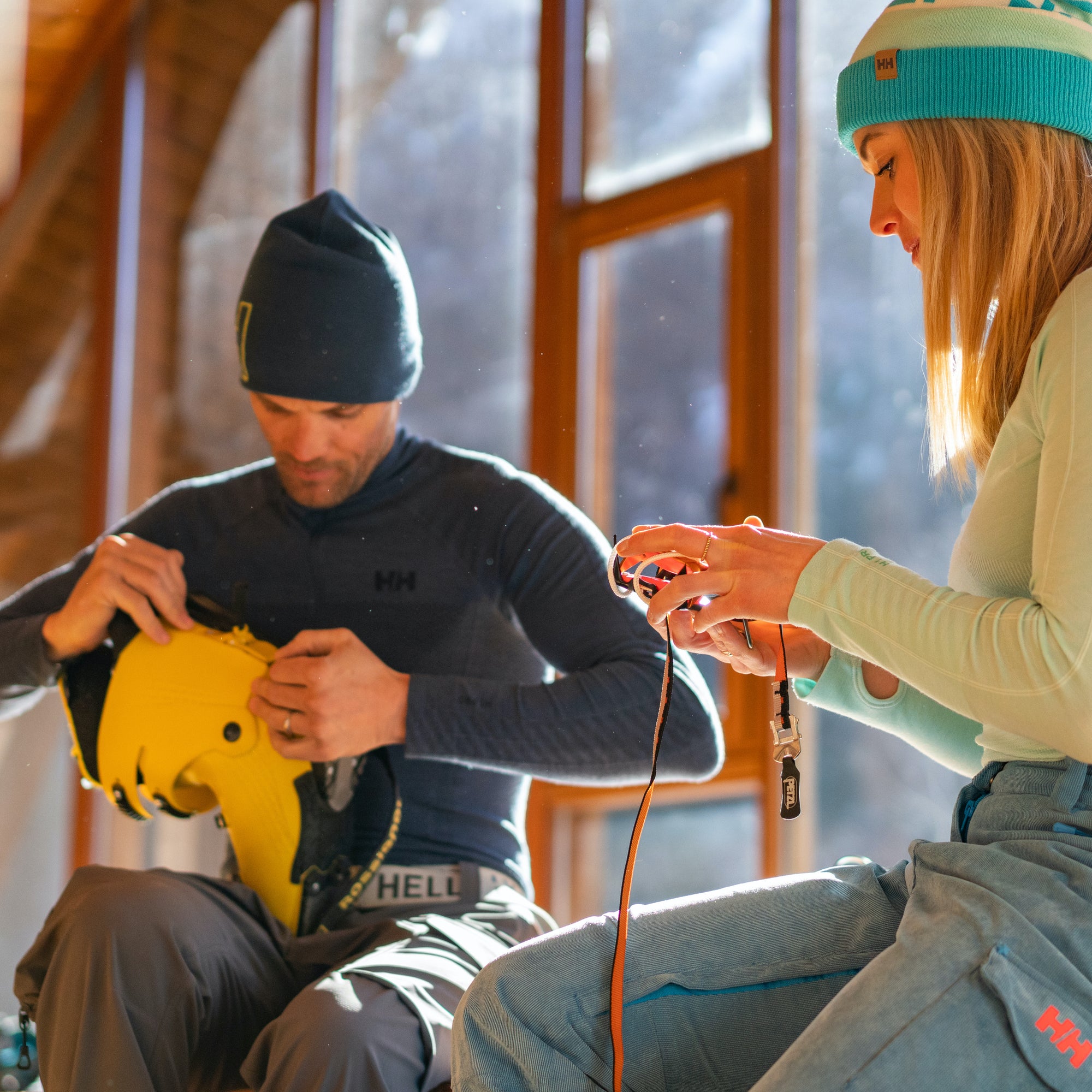Protection from the elements when you love to recreate outside is essential. The key to comfort in any weather condition is having the proper layers, and specifically waterproof-breathable outerwear. We want to help you understand everything you need to know to pick out the right jacket or pants for every adventure.

Waterproof Ratings
Waterproof ratings are determined by the clothing manufacturer or fabric producer, with testing done either by independent laboratories or in-house. There are a number of different testing protocols in use, but most involve the equivalent of placing a 1” x 1” square tube over the fabric and determining how high (in millimeters) a column of water you can suspend over it before it starts to leak.
Clothing rated between 5,000 mm and 10,000 mm (10k) is a good choice for people who spend long days out in any weather conditions. Clothing rated between 10,000 mm to 20,000 mm (20k) range or better are ideal for people spending time in wetter climates.
Breathability Ratings
Like waterproof ratings, breathability ratings are determined by both manufacturers and independent labs. If you do a lot of “high energy” riding, hiking, or running where you often break a sweat, look for breathability in the 10,000 to 15,000 gram range. Backcountry skiers & snowboarders, runners, and mountain bikers should look for garments with breathability in the 20,000 plus range for the best results.

About the fabrics
Waterproof breathable fabrics consist of an outer layer called the “face fabric”, usually made of nylon or polyester, and a laminated membrane or coating, usually made of ePTFE (expanded Polytetrafluoroethylene) or PU (Polyurethane). The purpose of the face fabric is to protect and look stylish; it’s not waterproof but is treated with a solution called DWR (Durable Water Repellent) so it doesn’t soak up water.
Membranes come in many different types and price ranges, but chances are you'll want a 2 Layer or 3 Layer fabric if you're looking for a versatile and durable snow garment. 3 layer fabrics (3L) have all the layers including the lining bonded together, while 2 layer fabrics use a separate fabric lining which makes for a bulkier garment overall. 2.5 layer fabrics have a raised pattern screened on the inside to keep it off your skin and are usually reserved for superlight rain garments.
Coated fabrics tend to be very waterproof but lack breathability in comparison to membrane laminates. These fabrics are less expensive and are great for emergency weather protection or for activities that don't involve a high level of exertion.
Seam sealing or seam taping, is the process of covering the tiny holes made by the needle in the sewing process so the garments don’t leak. Jackets, pants, and other outerwear can be either “fully taped” or “critically taped” – the difference is that a fully taped garment has every seam taped, while a critically taped one has tape only on high exposure areas like the neck, shoulders, and chest. Without adequate seam sealing you’ll get wet even with the best waterproof/breathable fabric.
DWR stands for Durable Water Repellent. DWR treatment is what keeps the outer layer of your fabric from getting soaked by precipitation. Almost all outerwear exterior fabrics are treated with some sort of DWR. It causes water to bead-up and roll off the fabric. It is affected by abrasion, dirt and body oils.From falls on the mountain, rubbing against your pack or a chairlift, and everyday normal use can cause the factory DWR treatment to wear off. This is why, after some use, a garment will appear to no longer be waterproof. Luckily if your jacket or pants no longer seem waterproof it likely means the fabric needs to be refreshed by simply washing the garment and/or re-applying the DWR treatment.
There you have it. An overview of fabrics, their waterproofness, breathability and how they all work together to create the outer layers we all have come to love.
![]()



